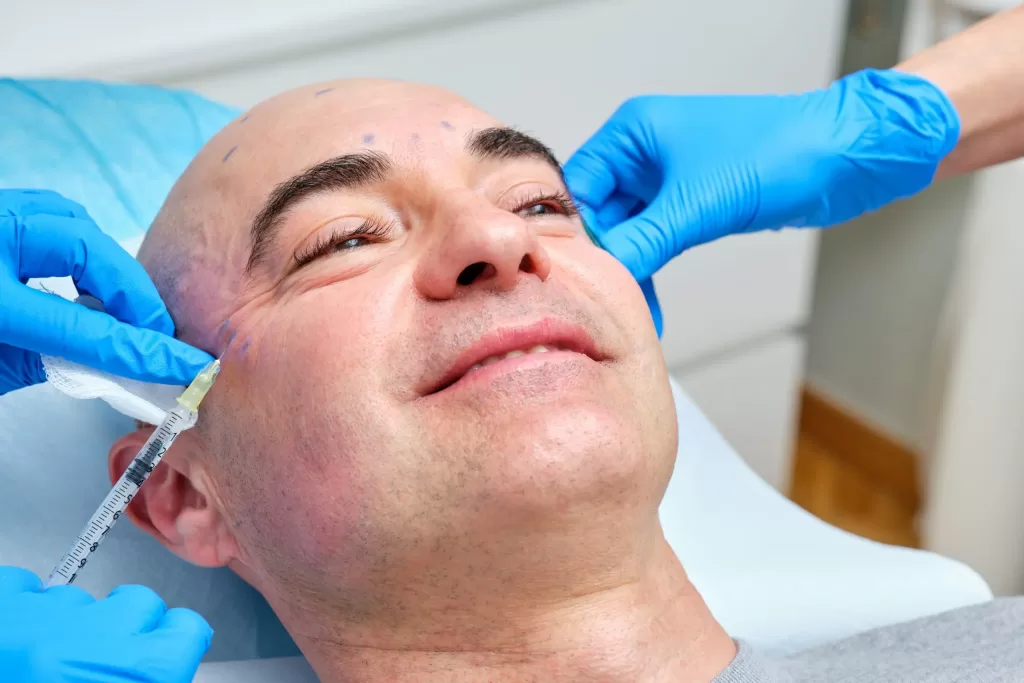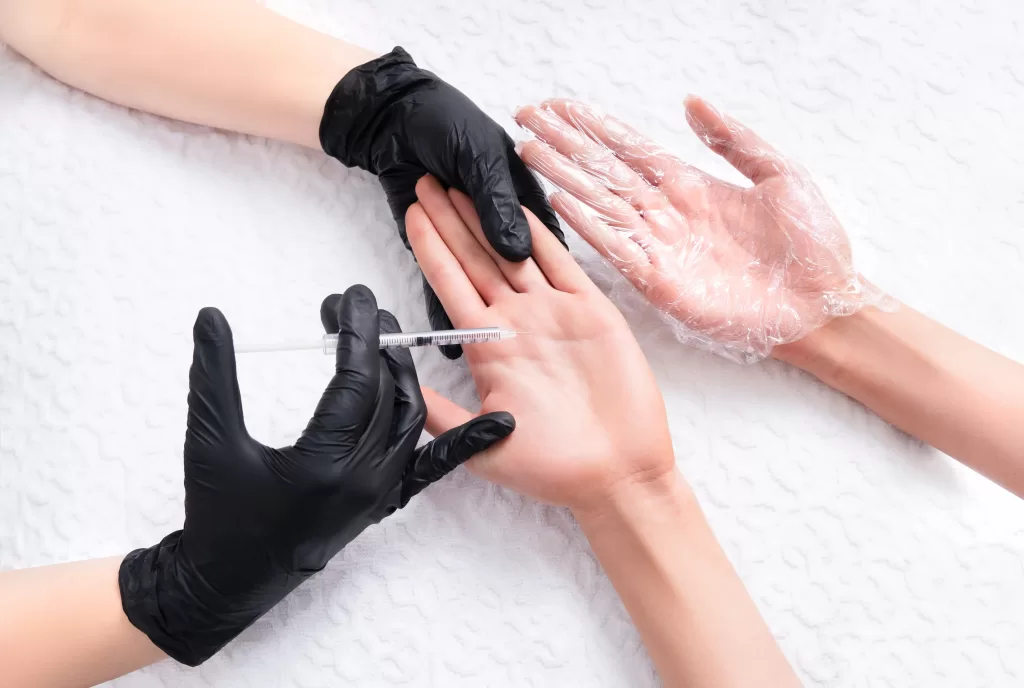Demystifying Anti-Wrinkle Cosmetic Procedures
Medically Reviewed by Dr Aifric Boylan
Last updated on 17.07.2024
Anti-wrinkle treatments usually refer to botulinum toxin A (BTA), which is the chemical name for brands such as Botox, Dysport, and Xeomin. It is a neurotoxin that stops a chemical signal between a nerve and a muscle, rendering the muscle unable to move, or paralyzed. When the muscle cannot move, it cannot pucker the skin on top of it, hence wrinkles cannot form.
BTA is best known for its use in cosmetics, where it is used to prevent and even reverse wrinkles. It is commonly used in the forehead, around the eyes (crow’s feet), or between the eyebrows for deep frowns.
BTA has also been used for decades for medical indications including bladder issues, anal fissures, migraines, bruxism (tooth grinding), and hyperhidrosis (excess sweating).
The procedure for anti-wrinkle injections
When getting BTA for cosmetic purposes, you can expect the experience to be almost painless and very quick. It can be done by anyone who has trained as an injector, generally a nurse or a doctor. Training can vary from a weekend course to many years of apprenticeship under the guidance of a specialist cosmetic physician or nurse. It can be hard to know who has had this training, so if you are unsure, ask your injector.
Preparation and injection process
The procedure of anti-wrinkle begins with assessing your facial features and sometimes taking photos. Your face will be cleaned with a disinfectant, which is painless. BTA comes in tiny vials and the injector usually uses insulin-like syringes, which contain a tiny needle that can be hard to see with the naked eye. Depending on the part of your face that is being treated, the injector may ask you to activate the muscles so that the wrinkles are visible and the dose of BTA can be correctly placed.
Dosage and sensitivity of anti-wrinkle
The doses of BTA are called units. For example, if you are having Botox in the forehead, you may have between 15 and 30 units depending on your anatomy. If you are having Xeomin for the crow’s feet, you may have between 15 and 25 units. If you are having Dysport in the frown between the eyebrows, you may have 40 and 60 units. These amounts of units generally equate to about 0.3-1.5ml of liquid, which is less than a fifth of a teaspoon. Some areas of the face are more sensitive to the tiny needle, for example, the edges of the eyebrows or the forehead. Other parts, like the crow’s feet and eyebrow frown, are less sensitive. Generally speaking, most people tolerate cosmetic BTA treatments well.
Duration and aftercare of anti-wrinkle treatments
The procedure can last between 5 and 30 minutes. The duration depends on how many areas of your budy are being treated and how comfortable you are with the procedure. No anesthetic is generally used, although some people use ice blocks to numb the skin if they are particularly needle-phobic.
Short-term effects and complications
After your anti-wrinkle treatment, you can experience bruising and bleeding in the short term, but that clears within days. For the following few days, some people can experience headaches, flu-like symptoms, and general malaise, but this is rare. You will usually be recommended to avoid exercise, rubbing the face, and alcohol for a day or so.
Other complications that can arise include injecting the wrong muscle, injecting too much or too little BTA. This can lead to asymmetrical results, heavy eyelids, Spock-like eyebrows, or an uneven smile – depending on which areas of the face have been injected.
Longevity and reversibility
Anti-wrinkle lasts about 3-4 months on average and will always resolve completely.
For people who have frequent injections over many years, their bodies can become tolerant to BTA, causing their results not to last as long. The good news is, if you do not like how it looks, it will disappear in 3-4 months.
Expanding cosmetic applications
More and more parts of the body are injected with BTA for cosmetic purposes, including the neck, hands, scrotum, and calves. There are no known long-term complications of using BTA. However, the more parts of the body are injected or modified for a prolonged amount of time, injectors are told to be alert to body dysmorphic disorder.
People have modified their bodies for millennia, by dying their hair, piercing their body parts, and inking their skin. Some people see cosmetic anti-wrinkle injections as part of that spectrum. What is important is that you are aware of the pros and cons and have enough knowledge to ask questions of your injector.
Getting a Mental Health Care Plan in Australia: Your Guide
Getting a Mental Health Care Plan in Australia: Your Guide Mental health matters—and if you’re feeling overwhelmed, anxious, or down, a mental health care plan can help. But what is it, and how do [...]
UTI Symptoms and Treatment: What You Need to Know
UTI Symptoms and Treatment: What You Need to Know Urinary Tract Infections (UTIs) are common, uncomfortable, and often disruptive. But what exactly are the signs to watch for, and how can you get relief [...]
Free Mental Health Care Plan Online | Bulk-Billed by Qoctor
Free Mental Health Care Plan Online | Bulk-Billed by Qoctor Discover how to get a free, bulk-billed Mental Health Care Plan (MHCP) in Australia through Qoctor's telehealth service. Accessing [...]






